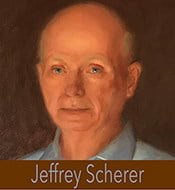 I am in the home stretch for the end of the first period of my recovery. This week I will have my splint changed to a full cast. The splint is basically a cast that is open on the the top to allow for swelling that occurs, naturally, post-operation. If all goes to the doctor’s plan, this will also be the last week that I have to remain in bed for 22 1/2 hours a day with my foot elevated above my heart. I will, for the next 4 weeks, still not be able to put any weight in the foot. Although I am almost completely off medications, my wife is advising me to be careful about weaning myself too quickly from Tylenol—a drug I worry about given the negative impact it has on the kidneys and liver. So, reluctantly, after a restless night I am going to reintroduce that drug into my blood stream—albeit gingerly.
I am in the home stretch for the end of the first period of my recovery. This week I will have my splint changed to a full cast. The splint is basically a cast that is open on the the top to allow for swelling that occurs, naturally, post-operation. If all goes to the doctor’s plan, this will also be the last week that I have to remain in bed for 22 1/2 hours a day with my foot elevated above my heart. I will, for the next 4 weeks, still not be able to put any weight in the foot. Although I am almost completely off medications, my wife is advising me to be careful about weaning myself too quickly from Tylenol—a drug I worry about given the negative impact it has on the kidneys and liver. So, reluctantly, after a restless night I am going to reintroduce that drug into my blood stream—albeit gingerly.
This week I am reading The Perfectionists by Simon Winchester. I loved his book The Professor and the Madman about the Oxford English Dictionary creation. That book’s synopsis is:
The Professor and the Madman, masterfully researched and eloquently written, is an extraordinary tale of madness, genius, and the incredible obsessions of two remarkable men that led to the making of the Oxford English Dictionary–and literary history. The compilation of the OED, begun in 1857, was one of the most ambitious projects ever undertaken. As definitions were collected, the overseeing committee, led by Professor James Murray, discovered that one man, Dr. W C. Minor, had submitted more than ten thousand. When the committee insisted on honoring him, a shocking truth came to light: Dr. Minor, an American Civil War veteran, was also an inmate at an asylum for the criminally insane.
Given that I have a tendency to not suffer imperfection lightly, I always love books about precision, invention, making, and creating through trial-and-error (especially Henry Petroski’s books like The Pencil). My dad was a car mechanic and gifted me a deep interest in how things work, how to fix things and the appreciation of fine craftsmanship. That love of perfection has carried through, first in my pursuit of architecture, and now in art. In The Perfectionists there is a fun chapter on the beginnings of the Rolls-Royce automobile company—a chapter I would not have fully comprehended had my dad not taught me how to repair cars.
The synopsis of the book is:
The revered New York Times bestselling author traces the development of technology from the Industrial Age to the Digital Age to explore the single component crucial to advancement–precision–in a superb history that is both an homage and a warning for our future.
The rise of manufacturing could not have happened without an attention to precision. At the dawn of the Industrial Revolution in eighteenth-century England, standards of measurement were established, giving way to the development of machine tools–machines that make machines. Eventually, the application of precision tools and methods resulted in the creation and mass production of items from guns and glass to mirrors, lenses, and cameras–and eventually gave way to further breakthroughs, including gene splicing, microchips, and the Hadron Collider.
Simon Winchester takes us back to origins of the Industrial Age, to England where he introduces the scientific minds that helped usher in modern production: John Wilkinson, Henry Maudslay, Joseph Bramah, Jesse Ramsden, and Joseph Whitworth. It was Thomas Jefferson who later exported their discoveries to the fledgling United States, setting the nation on its course to become a manufacturing titan. Winchester moves forward through time, to today’s cutting-edge developments occurring around the world, from America to Western Europe to Asia.
As he introduces the minds and methods that have changed the modern world, Winchester explores fundamental questions. Why is precision important? What are the different tools we use to measure it? Who has invented and perfected it? Has the pursuit of the ultra-precise in so many facets of human life blinded us to other things of equal value, such as an appreciation for the age-old traditions of craftsmanship, art, and high culture? Are we missing something that reflects the world as it is, rather than the world as we think we would wish it to be? And can the precise and the natural co-exist in society?
Of course, the perfection sought in the man-made does not translate very well to the way the body heals itself. My foot operation is the result of enormous progress in the way doctors have learned about anatomy and the coincident evolving of tools to carry out delicate operations. While the repair relies heavily on the perfection of the surgeon and his tools, during recovery I am at the mercy of my genetic composition and my body’s own processes. With one and one-half weeks down of 12 weeks to go, I am lucky that I inherited from my father a high tolerance for pain which allowed me to use only 1/4 dose of the opioid for 1/5 of the prescribed time (I ended last Saturday). I hate taking any medication—preferring to let my body do its job (I inherited this from my grandfather). I was lucky to find a superb surgeon who reconstructed my foot and was able to repair the tendons without harvesting from my calf. As you might guess, I am not in my normal go-go mode—which is very frustrating. Lea has been a dream helping me manage with only one leg and less energy as normal. It is ironic that she is also in physical therapy for a fractured humerus (final stages). We are thus, simultaneously, in recovery mode. We joke that our condo is like a mini nursing home with my walker and knee scooter, leg lift cushions, pee-pot, shower seat, physical therapy tools, etc.
Oh the joys of aging.


Recent Comments